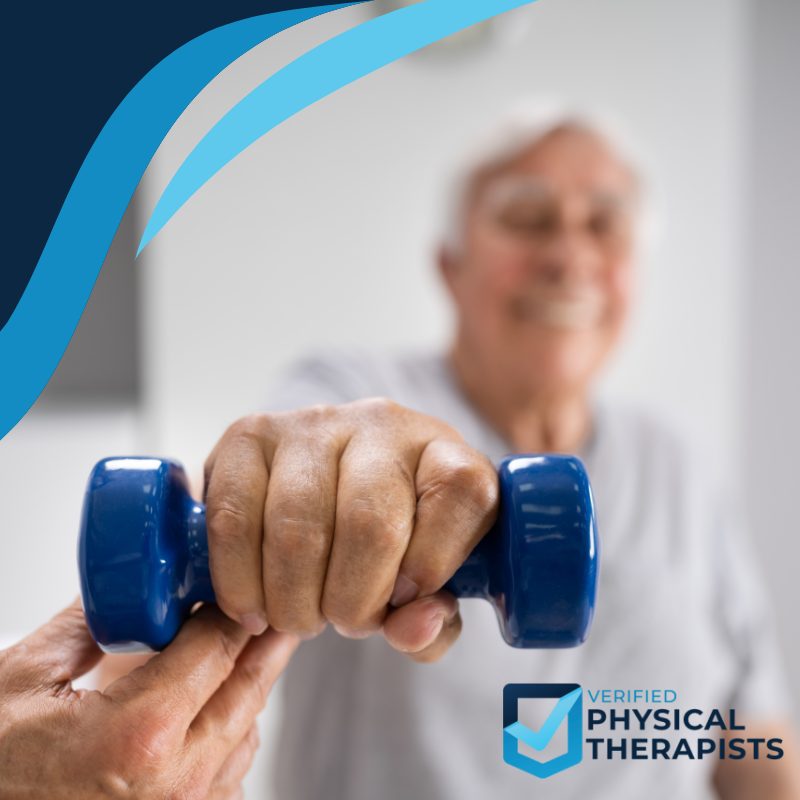
Injury Treatment With Physical Therapy
Explore how targeted techniques like manual therapy, strengthening, and recovery exercises play a crucial role in rehabilitation and sports injury recovery. Experience the transformative power of physical therapy in overcoming injuries and returning to peak performance.
Every injury presents a unique challenge, yet the journey towards injury recovery can lead to inspiring transformations. Rehabilitation techniques offer a pathway for improvement, allowing individuals to rebuild strength and regain confidence. Through the strategic use of exercise, therapists create personalized programs that cater to specific needs, promoting effective healing. Many have shared their experiences of overcoming sports injuries and chronic pain, highlighting the power of dedicated therapy. The shift in one’s emotional state during this journey is remarkable, fostering a renewed sense of well-being. With support from both professionals and community, countless individuals have documented their remarkable stories of resilience and triumph.
Techniques For Effective Injury Recovery
Achieving optimal physical health after an injury is crucial for overall well-being. Various methods contribute to this journey, with each offering unique benefits and limitations. Manual therapy employs hands-on techniques to alleviate pain and enhance tissue mobility, thereby improving blood circulation and facilitating healing. Ongoing sessions may be necessary, and not every injury responds well to this approach. Another approach, strengthening exercises, focuses on developing muscle support to help prevent future injuries. While dedication is key for success, there is a risk of overexertion without the proper guidance of a health care professional. Recovery exercises are essential for promoting flexibility, reducing pain, and facilitating the healing of muscles, ligaments, and tendons after injuries such as a sprained ankle, while also playing a crucial role in occupational therapy and overall health care.
The Importance Of Manual Therapy
Healing the body often requires a multifaceted approach that prioritizes comfort and functionality. A hands-on strategy is essential for addressing issues related to soft tissue and joint function. Various techniques, such as myofascial release and joint mobilization, focus on enhancing mobility and facilitating recovery from conditions like sports injury and surgical interventions. These methods can significantly improve the overall quality of life for patients, helping them regain strength and vitality. In clinical settings, health professionals frequently combine these therapies with additional treatment modalities to optimize patient outcomes. For example, incorporating massage techniques alongside exercise regimens can enhance circulation and promote healing in skeletal muscle and surrounding tissues. The power of this treatment lies in its ability to effectively alleviate pain and enhance recovery through the targeted application of transcutaneous electrical nerve stimulation, promoting healing in soft tissue and skeletal muscle, which is vital for health professionals managing sports injuries and joint disorders in their patients.
Healing Techniques
- Myofascial release and joint mobilization are effective techniques for improving mobility and recovery from injuries.
- Combining massage with exercise regimens can enhance circulation and accelerate healing in skeletal muscle.
- Transcutaneous electrical nerve stimulation is a targeted method that alleviates pain and promotes healing in soft tissue.
- These multifaceted approaches significantly improve the quality of life for patients recovering from sports injuries and surgical interventions.
Strengthening Exercises For Rehabilitation
Rehabilitation is a vital process that can significantly enhance recovery after an injury. Targeted exercises are crucial for restoring strength, improving stability, and promoting overall healing. These movements are particularly beneficial following a sports injury, as they help rebuild muscle while maintaining joint integrity. For instance, isometric contractions are effective in stabilizing muscles without mobilizing the joints, making them suitable for post-surgery recovery. Resistance band exercises not only provide versatility but also support individuals recovering from sprains and strains, enabling safe and effective strength enhancement. Bodyweight exercises, such as squats and lunges, are essential in improving overall strength and functionality, critical for long-term injury recovery
How To Manage Pain During Recovery
Effective strategies are vital for navigating the journey of healing following an injury or surgery. Both medication and alternative approaches can significantly ease discomfort and enhance the overall recovery process. While medications, including non-opioid and opioid options, offer relief, they often carry potential side effects that necessitate careful management. Additionally, starting physical therapy can be a valuable component of the healing journey, as a skilled physical therapist can help design a personalized exercise plan focused on restoring function and increasing the range of motion. Methods such as cold therapy and various manual therapy techniques can play a crucial role in complementing pain relief efforts. By utilizing various methods such as manual therapy techniques and cold therapy during your physical therapy sessions, a physical therapist can help you heal your injury and improve your range of motion throughout the recovery process after an injury or surgery.
.Recovery Process
- Effective pain management can significantly improve patient comfort during recovery.
- Physical therapy is essential for restoring function and enhancing range of motion after an injury or surgery.
- Cold therapy is known to reduce swelling and alleviate pain, aiding in the healing process.
- Manual therapy techniques can enhance mobility and promote faster recovery.
Enhancing Flexibility For Injury Prevention
Maintaining a well-balanced routine that includes various exercises plays a crucial role in keeping the body functioning optimally and minimizing the risk of harm. Incorporating these routines improves your ability to engage in daily activities and participate in playing sports safely. By regularly practicing specific movements, you can significantly reduce pain and the chance of muscle strains and tears, which often occur due to tightness. Both static and dynamic type of physical therapy enhance range of motion, allowing for better recovery from injuries by facilitating proper blood flow. These exercises contribute to improved mobility after an injury, ensuring joint stability and overall movement. Consistent engagement with these techniques not only boosts athletic performance but also decreases the likelihood of overuse injuries, making them essential components of physical therapy and occupational therapy that improve your ability to recover from injuries and reduce pain while enhancing mobility after an injury.
The Role Of Sports Medicine In Recovery
Effective recovery strategies are essential for athletes aiming to return to peak performance after experiencing an injury. Professionals in sports medicine utilize various techniques to facilitate healing and help you recover from injuries, ensuring athletes not only return to their sport but also prevent injuries in the future.Physical therapy offers a range of methods, including tailored rehabilitation exercises overseen by skilled practitioners. These experts, such as physical therapists and athletic trainers, collaborate to create individualized recovery plans based on the needs of the athlete, depending on the severity of the injury. Through the guidance of a physical therapist, strength and mobility in muscles and joints can be effectively restored.This interdisciplinary approach combines expertise from multiple fields to provide comprehensive care, including joint replacement and sports injury treatment, so that individuals can prevent injuries, regain strength, and recover from injuries with the guidance of a physical therapist, who can tailor physical therapy programs depending on the severity of their condition, ultimately helping to speed up recovery and restore function to muscles and joints.
Personalizing Your Treatment Plan
To navigate the journey of healing effectively, it is vital to adopt a strategy that caters to individual circumstances. When addressing severe injuries, personalized approaches can significantly enhance outcomes in rehabilitation. A thorough assessment of your situation and medical history is crucial for crafting a treatment plan that aligns with your unique lifestyle and goals. This tailored method helps set specific objectives that resonate with your daily activities. Experienced physical therapists collaborate with you to establish achievable milestones, ensuring that you progress steadily. Techniques such as manual therapy and customized exercises focus on building strength and flexibility, which are essential for recovery as well. Continuous evaluations allow for necessary adjustments in forms of treatment based on your progress, maximizing effectiveness. Maintaining open communication throughout this process is essential for ensuring effective treatment and maximizing your recovery, as it helps to address your needs and goals in regaining strength, flexibility, and mobility.
Achieving Mobility After An Injury
Restoring movement after sustaining an injury is a pivotal step towards reclaiming your daily activities. It’s important to outline methods that help you improve your ability to regain functionality and confidence, highlighting timelines and progression strategies along the way. The initial healing phase emphasizes rest and protection of the injured area. Gradually, therapeutic exercises may be introduced to enhance your recovery process. As you embark on physical therapy, setting individualized mobility goals becomes crucial to facilitate effective treatment. Adjust these targets based on your unique injuries and progress over time. Incorporating a variety of techniques, such as therapeutic exercises and breathing exercises, can help you improve your strength and flexibility, enabling a safe and effective path to full recovery and minimizing the risk of unique injuries in the future through a personalized treatment plan.
Injury Recovery
- Rest and protection are essential in the initial healing phase to prevent further injury.
- Therapeutic exercises can significantly enhance recovery and restore functionality.
- Setting individualized mobility goals is crucial for effective treatment and tracking progress.
- Diverse techniques, including strength and flexibility exercises, reduce the risk of future injuries.

